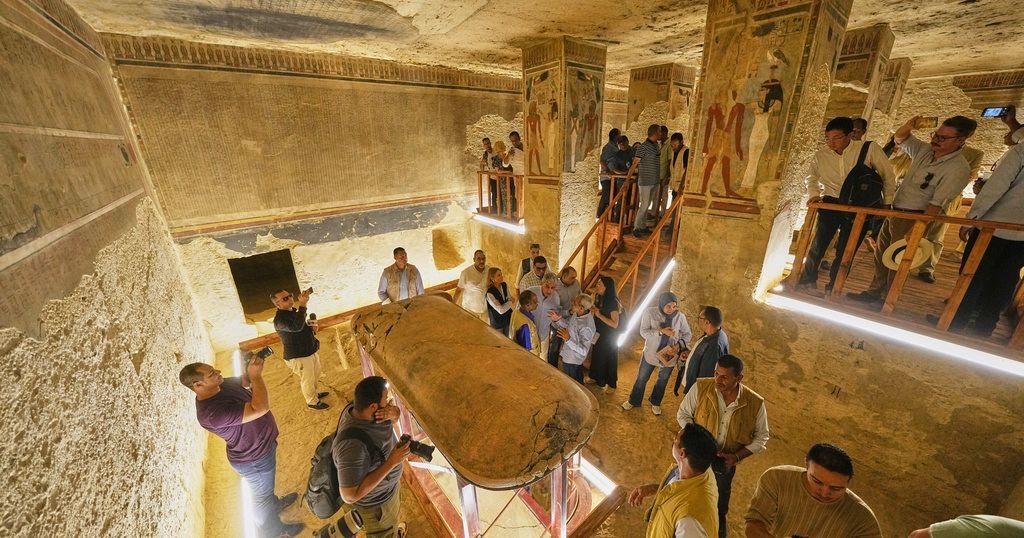Africa
Egypt: Pharaoh’s tomb reopened after more than 20 years of renovations

One of the largest tombs in Egypt’s Valley of the Kings reopened to visitors on Saturday after more than 20 years of renovation.
Amenhotep III ruled between 1390 and 1350 BC and was one of the most prominent pharaohs of ancient Egypt.
His reign marked a time of exceptional prosperity and grandeur, during which Egypt reached the height of its artistic and international influence.,
His tomb is carved into the hillside on the west bank of the Nile River near the city of Luxor.
“The tomb of King Amenhotep III was discovered in 1799, and then it was rediscovered again in 1915 by Howard Carter,” said Mohamed Ismail Khaled, Secretary-General of the Supreme Council of Antiquities.
“Of course, it was unfortunately discovered completely empty, so it was stolen before, even the sarcophagus. Only the lid of the sarcophagus is still there, and it was broken into more than 200 pieces.”
Restoration, led by a Japanese team with support from UNESCO, included the preservation of wall paintings depicting the pharaoh and his wife.
They are considered among the “most exquisite” of those surviving in the royal tombs of the Eighteenth Dynasty.
The reopening comes less than a month before the official inauguration of the Grand Egyptian Museum near the Giza Pyramids.
These steps are part of Egypt’s efforts to attract more foreign visitors to revive the tourism sector, a major source of foreign currency.
Sherif Fathi, Minister of Tourism and Antiquities, said tourism is doing well.
“We continue our growth at the rate of 20-plus per cent and we expect this to continue to the end of the year, thanks to the stability and the wisdom in managing and also positioning Egypt within this unrest around Egypt in general.”
The numbers of tourists to Egypt suffered a downturn after the political turmoil and violence that followed a 2011 uprising, and was recently impacted by the Israel-Gaza war.
Cultural tourism to it pharaonic artefacts is seen as one of the country’s main selling points.
